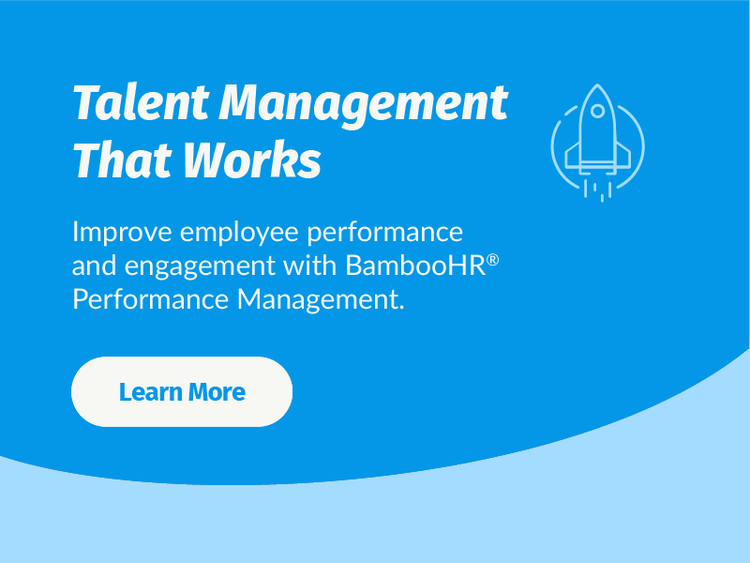How to Improve Performance Management

Change isn’t easy for people or organizations. Often, we get used to the way things are and resist changing them even if they’re not working very well. In dire cases, an intervention is called for. And that’s the case with Performance Management.
Traditional employee performance management has not always been as effective as it should be, but you can change your performance management plan to deliver greatly improved results.
The Trouble with Traditional Performance Management Plans
For decades, most organizations’ performance management processes have relied on annual performance appraisals to evaluate employees and make decisions about their pay raises and promotions.
A primary criticism is that these annual reviews usually focus too much on past performance and do little or nothing to shape future improvements. Plus, who can remember exactly what happened six, nine, or twelve months ago?
But are these annual reviews meaningful and helpful anyway? Do they benefit the organization and its employees? These statistics paint a grim picture:
- 95 percent of managers are dissatisfied with how their companies conduct annual performance reviews.
- 77 percent of HR executives believe performance reviews don’t accurately reflect employee contributions.
- Only 26 percent of employees strongly agree that the feedback they receive helps them do better work.
- 22 percent of millennial employees dread annual reviews so much that they have called in sick to avoid them.
Why bother with performance management, then? Because although the dysfunctions of traditional performance management may seem too pervasive to solve, they actually result from a few issues that can easily be fixed. Once that’s done, managers and employees will reap substantial benefits from improved appraisals and the other worthwhile components of a well-rounded performance management system (more about them below).

What Is Performance Management?
The definition of performance management is “the process or system by which an organization measures and improves performance within its workforce.” Most often, those efforts are aimed at helping individuals, but performance management is also used to help teams, departments, and entire organizations achieve their potential and meet big goals.
A complete performance management system should include the following elements, tailored to your firm’s needs and structure:
Manager Feedback
Ideally, managers should play a central role in performance management. Workers want to know how they’re doing and what’s expected of them. Yet 56 percent of employees say they do not receive manager feedback on what to improve. Manager feedback can include everything from formal performance reviews to one-on-ones, mentoring, and even casual water cooler conversations.
360-Degree Surveys
With 360-degree surveys, feedback comes from a wider variety of sources to provide a more complete picture of an employee’s strengths and weaknesses. Managers, teammates, customers, and vendors may weigh in, and the employee completes a self-assessment. Once the results are in, the manager and employee discuss them.
Performance Improvement Plans
Think of a performance improvement plan as a blueprint to help an underperforming employee, department, or entire organization succeed. This formal document clearly spells out the desired results, the means to accomplish them, and the metrics that will be used to measure progress.
The Definitive Guide to Performance Management
Goals
Goals help employees keep progressing. Whether it’s taking charge of a new project or cross-training in another department, great things can happen when managers and employees collaborate on setting and tracking employee goals that align with company objectives. One popular way to set worthwhile goals is to use the acronym SMART, which stands for goals that are Specific, Measurable, Achievable, Results-based, and Timely.
Rewards and Recognition
More than 80 percent of employees wish they received more recognition for their work accomplishments. A good rewards and recognition program makes sure they get it. A personal thank-you from the boss, a bonus, or an extra day off are just a few of the many ways to make rewards and recognition meaningful.
How Performance Management Has Evolved
Managers have been sizing up their team members in one way or another since the Stone Age. But performance management as we know it began to take shape during World War I, when the U.S. military invented an appraisal system to help identify individuals who didn’t measure up. Performance appraisals in the private sector didn’t really catch on until the 1940s, when about 60 percent of U.S. companies were using them. Even then, many appraisals were nothing more than attempts to evaluate an employee’s personality traits.
In the following decades, a growing body of research helped employers improve their methods of measuring employee performance. They began rewarding top performers with higher pay. In recent years, employers have recognized that modern workers want more than money: they also want to be rewarded with development and growth opportunities. Happily, providing those perks is a win-win proposition: employees gain new skills and develop their career as the company develops the talent it needs to grow and thrive.
Also in recent years, performance management software has revolutionized the performance management process, streamlining and simplifying it. Precious hours can be saved by automating performance management tasks via online forms, automatic email reminders, online 360-degree surveys, and other tools. This leaves more time for the HR team to focus on strategic initiatives.

Performance Management Is Already Changing
The movement away from relying too much on traditional annual performance appraisals is already underway. An estimated one-third of U.S. businesses have overhauled their performance appraisal process, and many have thrown out annual reviews altogether.
What’s driving the changes? Businesses cite many factors, but foremost is a poor return on investment; in simple terms, the time and money that traditional performance management requires produces disappointing results. Research by the Society for Human Resource Management (SHRM) finds managers spend an average of 210 hours every year on performance management activities, and employees spend 40 hours per year. One Deloitte manager called the traditional review process “an investment of 1.8 million hours across the firm that didn’t fit our business needs anymore.”
How to Improve Your Performance Management Plan
If you’re ready to make the move to improve performance management, it might seem like an overwhelming task—but it doesn’t have to be. Focus on one improvement at a time and before you know it, you’ll see impressive results. Here are some ideas and best practices to consider:
Put Frequent Feedback First
As we’ve said, old-school annual reviews aren’t enough. Employees prefer and respond better to frequent, ongoing feedback. Consider what mixture of semiannual formal reviews, quarterly progress reviews, monthly one-on-ones, and weekly check-ins would work best in your organization. Keep things simple so they don’t require too much time. Even informal chats in the break room can help managers and leaders learn what’s on employees’ minds and build relationships with them. Annual reviews can still have their place as a summary of the year’s feedback and the results of performance goals.

Give Formal Review Questions a Tune-Up
Conventional performance appraisal questions like, “How valuable is this employee on a scale of one to ten?” are too subjective. Imagine the difference if you instead asked, “What would you do if this employee were offered a job elsewhere?” Questions like this, which require thought, can produce more insightful and objective answers than asking for numbers that might mean different things to different managers. You can also improve your questions by considering what you want the review to accomplish. For example, is it about evaluating performance, fostering development, or both? What employee qualities are most important to measure? Align your questions with your organization’s objectives and your employees’ interests.
One more suggestion: limit your performance appraisals to a few key questions. Too often, the long list of required questions is a burden to complete.
Separate Performance Appraisals from Compensation Discussions
When traditional annual reviews are used to determine pay raises, it can throw a wrench into the conversation. Employees may be tempted to say whatever they think will get them a raise instead of answering questions honestly. What’s worse, that pressure to pad numbers may not even be necessary; many managers award or withhold raises based on how much money is left in the budget, not the employee’s performance. Take the pressure of salary negotiation off the table, and you’ll get more honest answers that will let you use reviews to help employees actually become better workers.
Focus on the Future
To avoid the trap of unproductively dwelling on the past, Gallup recommends using coaching conversations to collaborate with employees on what’s happening now, what needs to happen next, and how to get there. Set clear expectations for behavior and performance and explain how success will be measured. Use open, honest, and ongoing two-way dialogue to help employees feel heard and understand how their future actions can best align with company objectives. Managers may need formal training to sharpen their coaching skills.
Build on Strengths
It pays to accentuate the positive. Research shows when managers focus performance discussions on employee weaknesses, performance declines by 27 percent. But if they focus on employee strengths instead, employees show a 36 percent improvement. This doesn’t mean ignoring weaknesses; it simply means you’re likely to see better results and happier employees when you first help them build on their strengths. If you must give negative feedback, be as specific and objective as possible and let them know you believe in their ability to improve.

Help Employees Grow
In the LinkedIn Workplace Learning Report, 94 percent of employees say they would stay at a company longer if it provided great learning and development opportunities. Find out what your employees want to pursue and learn, and then give them a pathway to do so. Set and track realistic, achievable goals. Give them added responsibilities and training to help develop their careers. Look for opportunities to fill internal needs with people you already have by developing employees for key roles.
Choose the Right Software
Good performance management software can help you automate processes, optimize reporting, analyze data, and strategize for the future. But there are many software platforms to choose from, and it’s essential to find one that’s a good fit for your needs and future growth. You’ll find detailed advice about that in the free BambooHR ebook, The Definitive Guide to Performance Management.
What Are the Benefits of Sound Performance Management?
When you do performance management the right way, it fosters greater employee engagement by providing timely, actionable feedback and ample opportunities for development. Gallup research finds that companies with highly engaged employees see a wide variety of business benefits, including:
- 17% higher productivity
- 20% higher sales
- 21% higher profitability
- 41% lower absenteeism
- 24% lower turnover (in high-turnover organizations)
- 59% lower turnover (in low-turnover organizations)
- 28% less shrinkage
- 70% fewer employee safety incidents
- 40% fewer product defects
These benefits are remarkably consistent across different industries, company sizes, and economic conditions.
Additional benefits of performance management include:
- Improved employee motivation and morale
- Greater ability to identify employee skill gaps and training needs
- More consistency in evaluating and developing employees
And let’s not forget the other benefits we’ve mentioned in this article, such as improved communication between managers and employees, clearly defined employee expectations, and increased employee satisfaction.

Reaching Your Destination
Where do you want your organization to be next month, next year, and in years to come? Once your leaders have charted the course, it’s up to your employees to take you there. Don’t count on yesterday’s flawed appraisal process to help. A robust, efficient performance management system can guide your workers on the path to your organization’s goals, magnify their contributions, and speed them ahead on their individual career journeys, too. Improving your firm’s performance management is a worthwhile investment in their future—and yours.